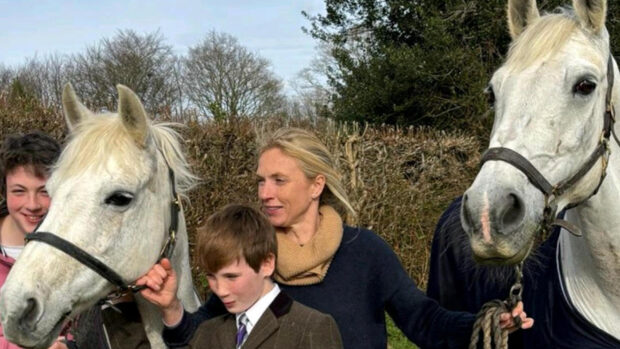Q: My daughter has just had a kidney transplant. We need to protect the kidney and her abdomen area when she starts riding again. Have you any ideas how this could be achieved?
JG, Gloucestershire
According to NHS Direct, around three months after surgery most transplant recipients are able to lead fairly normal lives and can return to work. If your daughter’s doctor considers her to be fit enough to return to riding, there are several products that could help protect the back and abdomen area.
To protect your daughter when she is simply around the horses, you could invest in the Mountain Horse Bodyguard Jacket (£163.95), which looks like a normal, waterproof riding coat but features detachable, shock absorbing protective pads for the chest, shoulders, elbows, spine, hips and lumbar regions.
Body protectors
Roger Cooper is the newly-appointed chairman of the British Equestrian Trade Association (BETA) body protector committee and is managing director of Rodney Powell Body Armour. He has come across cases like your daughter’s before.
“In my experience of patients who wished to continue riding after a kidney transplant, the transplanted organ was positioned in the lower abdomen/stomach area,” he said.
“Obviously, normal BETA level three body protectors can’t offer any protection here when sized correctly.
“Despite the fact that Rodney Powell Body Armour is available in 10 body lengths, six width fittings and four back lengths, the only way we have been able to offer protection for transplanted organs is to make a separate impact pad of BETA level three shock absorbing foam, shaped to sit over the lower abdomen,” Roger explained. “This pad was attached to the front of the body protector by a hinge of fabric, allowing the rider to have normal freedom of movement and some reassurance.
“However, as we have no means of proving the capabilities of such a pad, we made sure that each of the aforementioned users discussed the matter with their surgeon before taking up riding again.
“No body protector manufacturer can possibly say whether a garment can absolutely protect a transplanted organ and, as this is an impact zone that has not been researched, your daughter should think very carefully about the dangers involved before continuing with her riding.”
Safety standards
Make sure any body protector you choose is fitted correctly and meets current standards. The BETA 2000 level three standard is advised for normal riding and competitions.
Recently launched on to the equestrian market are inflatable products that originate from motorcycle garments and feature a lanyard attached to the saddle that releases a gas canister for inflation. Research is ongoing.
INFORMATION
• BETA, tel: 01937 587062 www.beta-uk.org
• Mountain Horse www.mountainhorse.se
• Rodney Powell Body Armour, tel: 01823 662800 www.powellprotec.com
This Q&A was first published in Horse & Hound (6 November, ’08)




